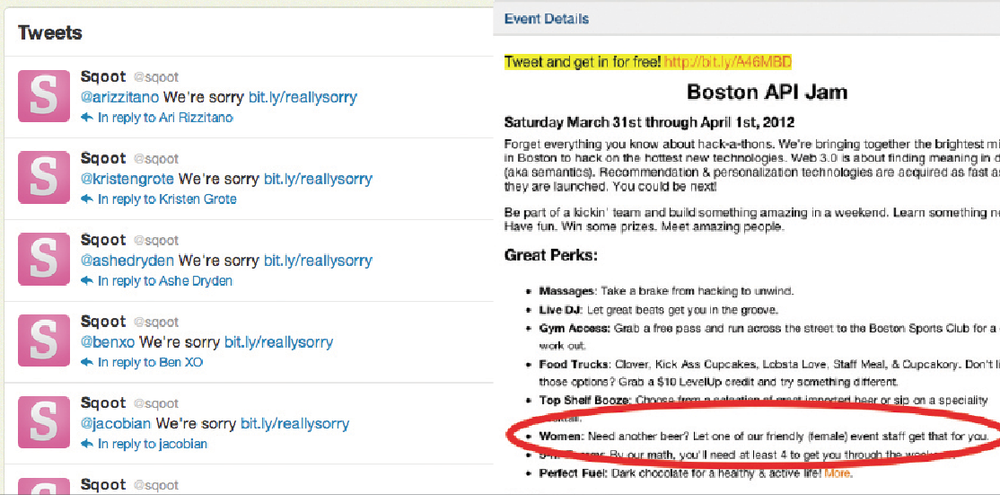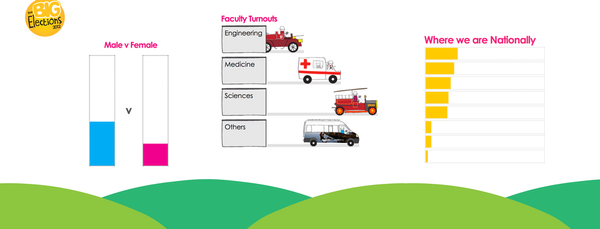Too few women and no change in sight
Feroz Salam on how equality is a long way away in the world of ‘brogrammers’

If you like your Felix lighthearted, you may want to turn the page, because this article is anything but. The seeds of my piece were planted when I heard that one of my friends was planning to attend CodeF, a Google networking event ‘exclusively for female computer scientists’ attending top universities here in the UK. These kind of events are commonplace at Imperial, women-only events meant to encourage female scientists and engineers to apply to the top jobs in the country, jobs that are skewed heavily towards men. Unfortunately, these firms are fighting a battle that is very near lost in a fashion that places gestures over results. The losers are not the women already at Imperial, but the many women who will be turned away before they even get the chance to wine and dine with Britain’s best.
An opportunity lost
The information revolution is the first major ‘revolution’ to have occurred after women’s rights rose to prominence. It was as such an excellent opportunity to start off with an attempt at gender equality. Looking at where we are now, however, it is obvious that this mission (if it ever existed) has failed. Imperial is split 65%-35% between men and women, while the ratio in Computing is almost certainly worse.
Top City and tech firms vie to attract the handful of female computing graduates that do make it in, but an undercurrent of mild sexism in industry has also been well documented. In a now infamous presentation at a Ruby conference in 2009, a presenter used soft-porn images to illustrate how your servers could ‘perform like a pr0n star’, while an excellent article in Mother Jones magazine titled ‘“Gangbang Interviews” and “Bikini Shots”: Silicon Valley’s Brogrammer Problem’, documents countless examples of women in the industry being not just discriminated against but (perhaps more insultingly) being completely ignored.
It is a depressing fact that this battle that could have easily been won many years ago has now been almost completely lost. This is leaving us with yet another highly paid, booming industry where men vastly outnumber women. Firms that scrabble around for female computing graduates are not making things worse, but are not really making things better: the ratio of women to men entering the tech industry is still at best 65% to 35%.
It’s because of this that it’s hard to believe that the fight for equality has to be won in the workplace, or even at university. Most of the women I have worked with and taught in my four years of Computing at Imperial have been highly ambitious and passionate about the subject. They will probably go on to great things at workplaces that will bend to their terms rather than vice versa, as is often the case with graduates from Imperial.
The mission to motivate them into graduate technology is arguably not as vital, as they are obviously already motivated enough. Hiring the 35% already in the doors is easy, but fixing the reasons why there are only 35% is where the real problem lies.

Forcing an attitude change
The first port of call needs to look at our children, and the influences they receive. Toys and games play a huge role here. The blogger Kate Bachus takes the brilliant example of Lego sets. Those targeted at boys are a magnitude more complex than those targeted at girls of the same age. Skills you learn on Lego sets are pretty much the exact same ones you apply when problem-solving in programming, and it’s hard to imagine girls having an interest in the latter when they are never challenged by the former.
Setting toys aside, games are another area where women are almost unconsciously sidelined: games targeted at girls tend to be of the ‘Good Housekeeping’ variety (simplistic family and food management routines), while their male-oriented counterparts involve journeying across nations/planets/fantastical lands to slay terrorists/aliens/dragons, often at a budget that would be enough for twenty versions of Cake Mania (I’ve played three versions, so I would know). Given that so many people I know first discovered programming when they were young ‘to make a game’, I suspect that a fair chunk of the 65/35 gap lies there.
Now that we have girls interested in programming, how do we get them to put that down on their UCAS forms? This problem is more complex, but I suspect a lot of it boils down to representations of programmers in the media. I can think of only two major productions where the techie is a woman: The Girl with the Dragon Tattoo and the American drama Criminal Minds. The majority (CSI, The Social Network, Swordfish, or virtually any major production with the need for an IT professional) all portray the person behind the computer as an awkward male with a one-dimensional personality. Even before you begin to delve into the expectations placed on women, you have to ask, who wants to be that man? I certainly don’t. That we have any women applying to work behind a moitor should amaze us.
Clawing back some equality
The truth is, a brilliant opportunity to turn the tables on ingrained sexism at our universities and workplaces was lost some time ago, probably before our generation was born. Instead, we start off with the same representation of gender as we have in the other, older fields of engineering (Meccano for boys, Barbies for girls, anyone?), and the smelly, antisocial male programmer as our protagonist. Is the fact that we end up with abysmal numbers of women in the field any surprise?
My advice for the bevy of tech firms lining up with their women-oriented programs would be this: fight the fight where it will make a difference in the future. Campaign for girls to be treated as they are: fully intelligent and creative members of society, with the potential to be excellent engineers. School outreach programs help, but even more necessary is the promotion of media and toys that focus on girls working with computers too. Destigmatise the notion of working as a programmer, by showcasing the best men and women in your company doing things that make a tangible difference.
Finally, there must be a campaign to root out the sexist culture in technology that is so brilliantly (albeit unintentionally) encapsulated by the movie Swordfish: a woman on her knees giving a blowjob while a man does the real work. A buffet lunch at a networking event is something, but not nearly enough.









